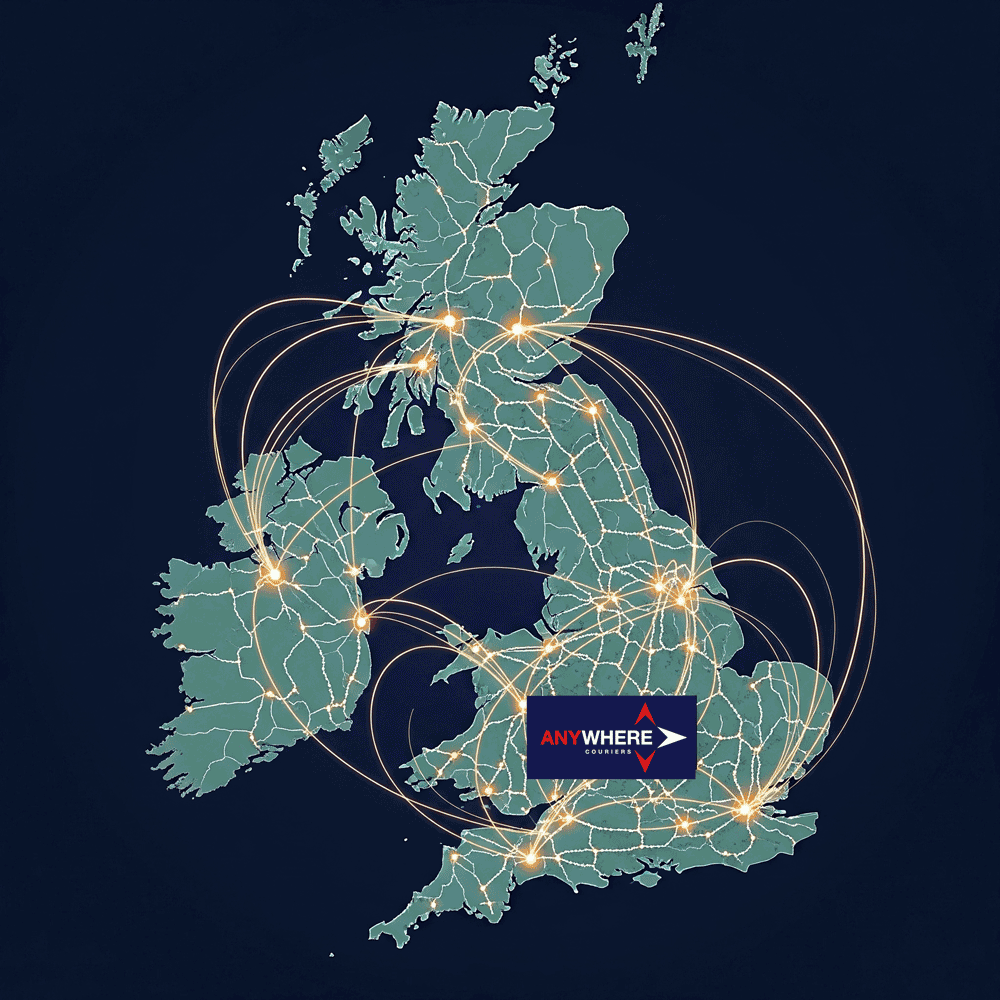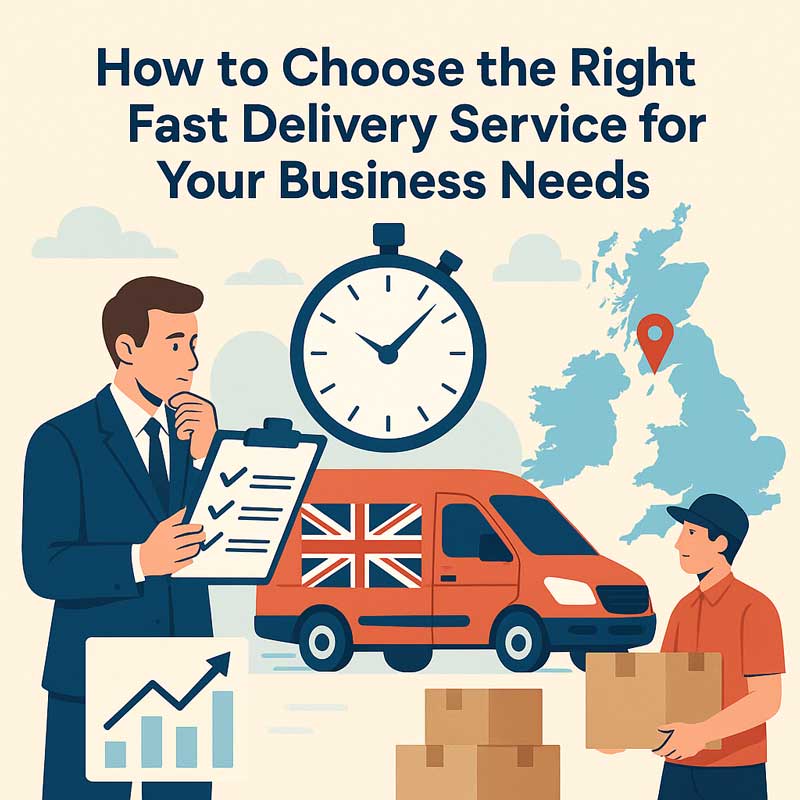In today’s competitive business landscape, prompt and reliable delivery is crucial for ensuring customer satisfaction, optimizing supply chain management, and maintaining a competitive advantage. Businesses must reduce lead times and manage costs while meeting customer expectations. A fast delivery service should align with your business model by offering speedy shipments, cost-effective pricing, broad geographic coverage, and careful handling of various package sizes and weights. For many companies—from retailers to e-commerce platforms—delivery is a key part of the brand promise, helping to improve turnaround times and enhance customer communication and market differentiation.
This article reviews the key aspects to consider when selecting fast delivery services, explains how to assess your delivery needs, compares top service providers, and outlines useful methods for comparing costs, speeds, and features. It also addresses common challenges and provides practical strategies for overcoming them while considering local and national options.

Important Factors to Check When Choosing Fast Delivery Service.
Fast delivery services affect all parts of the supply chain and customer experience. Key factors include:
• Delivery Speed & Reliability: Meeting promised delivery times builds customer trust and minimizes disruptions. • Cost Efficiency: Balancing competitive pricing with service quality helps maintain profit margins. • Geographic Coverage: Providers covering broader locations offer flexibility for businesses operating nationally or internationally. • Package Size & Weight: Different carriers specialize in various shipment types, so proper matching reduces handling issues. • Customer Satisfaction: Reliable tracking, strong customer service, and effective reverse logistics are critical to maintaining a positive brand image.
| Factor | Importance Level | Impact on Business | Example/Metric |
|---|---|---|---|
| Delivery Speed & Reliability | Critical | Enhances customer trust and satisfaction | 95% on-time delivery rate |
| Cost Efficiency | High | Helps maintain profit margins | Price per shipment |
| Geographic Coverage | Moderate to High | Expands market reach and flexibility | Nationwide vs. regional |
| Package Size & Weight | High | Reduces handling issues and damage | Bulky vs. light items |
| Customer Satisfaction | Critical | Builds brand reputation and loyalty | Customer feedback scores |
How Do Delivery Speed and Reliability Impact Your Business?
Timely and reliable deliveries directly enhance customer experience. Fast deliveries reduce lead times, increase customer satisfaction, and can boost retention by as much as 15% when improvements are made. Real-time tracking updates and clear communication about delays minimize customer service issues and lower operational costs. Achieving rates of 98% on-time delivery can set a company apart in a crowded market by demonstrating strong operational performance.
Why Is Cost Efficiency Important in Fast Delivery Services?
Cost efficiency is critical since businesses must manage tight logistics budgets. An ideal delivery service offers fast shipping at competitive costs without heavily impacting profit margins. This involves analyzing different pricing models—flat rates, weight-based fees, variable pricing based on distance, and surcharges for peak times or express services. While same-day delivery might cost more, the premium can be justified by improved customer satisfaction and repeat business. Many companies use analytics to compare the cost per shipment and determine if paying slightly more can lead to overall savings by reducing disruptions and returns.
How Does Geographic Coverage Affect Your Delivery Options?
A provider with broad geographic coverage ensures prompt delivery regardless of customer location. For businesses with national operations, consistent service across varied regions is crucial. For international shipments, providers that offer strong customs handling, regional networks, and local pickup options can greatly enhance service quality. A provider capable of covering both metropolitan and rural areas can simplify logistics and achieve economies of scale, reducing overall shipping costs.
What Role Do Package Size and Weight Play in Service Selection?
Different delivery services have specific guidelines for package dimensions and weights. If a provider isn’t optimized for your shipment type, you may face extra surcharges or damage issues. For example, businesses shipping fragile electronics need carriers with secure handling methods, whereas those dealing in lightweight consumer goods might benefit from more cost-effective options. Matching your product attributes with a provider’s capabilities minimizes handling issues and ensures smooth delivery operations.
How Can Customer Satisfaction Influence Your Delivery Choice?
Customer satisfaction is a key performance indicator in delivery services. Providers that excel in communication, on-time performance, and problem resolution tend to secure higher satisfaction ratings. High satisfaction leads to repeat business and positive referrals, whereas delays or damaged items can harm a brand’s reputation. Gathering customer feedback through surveys and Net Promoter Scores helps businesses identify areas for improvement and negotiate better service terms with carriers.
How to Assess Your Business Needs for Fast Delivery Services?
Before selecting a delivery service, assess your operational needs by analyzing shipment volumes, frequencies, and specific service features required by your industry. Begin by identifying whether you need overnight, same-day, or scheduled deliveries along with any special handling for fragile or high-value items. An internal review of logistics performance, customer feedback, and costs can establish benchmarks for improvement.
What Delivery Requirements Should You Identify First?
Define the specific delivery needs that impact your customer experience. Consider the required delivery timeframes, level of tracking and transparency, and any special handling instructions. For instance, if your competitive edge is same-day delivery, the service must reliably offer it. You might set benchmarks such as a 95% on-time rate or less than 2% product returns due to shipping errors. Account for seasonal fluctuations and the need for scalable solutions.
How to Evaluate Your Typical Shipment Volume and Frequency?
Review historical shipment data to understand your average daily, weekly, or monthly order volumes. Recognize both peak and regular cycles to anticipate surges during events or seasonal sales. This information is vital for negotiating volume-based pricing and ensuring the chosen provider can handle your business scale, especially if you ship hundreds of orders per day.
Which Delivery Features Align With Your Industry and Products?
Different industries demand different service features. For example, technology retailers may need specialized handling for electronics with anti-static requirements, while fashion retailers might focus on accommodating seasonal spikes and flexible returns. Map your product specifications to carrier capabilities—such as secure packaging, shock absorption, and proper temperature controls—to compile a checklist that ensures long-term compatibility.
How to Balance Speed Versus Cost for Your Business Model?
Balancing speed with cost is often a trade-off. Faster deliveries typically cost more but can drive customer retention and higher lifetime value, while slower services might reduce expenses but risk customer dissatisfaction. Perform a cost–benefit analysis considering factors like cost per mile and potential bundled services that may include insurance or reverse logistics. Even an extra $2 per same-day shipment might be worthwhile if it significantly boosts repeat orders.
What Are the Best Fast Delivery Service Companies to Consider?
Selecting a provider involves comparing industry leaders and local couriers. Major companies like FedEx, UPS, and DHL are noted for their extensive networks and advanced tracking systems, while local providers may offer faster, more flexible last-mile deliveries.
How Do Major Providers Like FedEx, UPS, and DHL Compare?
FedEx is known for next-day delivery and advanced tracking; UPS offers customizable services across diverse industries; and DHL excels in international express deliveries, especially within the EU. Although these providers often charge premiums, their reliability and broad coverage make them valuable for large-scale shipping. Local couriers, meanwhile, can offer quick regional services with personalized support.
| Provider | Primary Strength | Geographic Coverage | Notable Feature | Typical Use Case |
|---|---|---|---|---|
| FedEx | Next-day delivery | Global | Advanced tracking system | Time-critical shipments |
| UPS | Comprehensive logistics | Global | Customizable service plans | High-volume, diverse sectors |
| DHL | International express | Global (strong in EU) | Efficient cross-border transport | International e-commerce |
| Local Couriers | Regional expertise | Regional/local | Fast last-mile delivery | Same-day local orders |
When Should You Consider Local Couriers or On-Demand Services?
For extremely short delivery timelines or localized services, consider on-demand couriers. They often provide rapid, same-day, or even within-an-hour deliveries, especially in urban areas. Local providers are flexible with special requests like document delivery or installations and tend to have lower overhead costs, making them ideal for addressing last-mile challenges and boosting customer satisfaction.
What Unique Features Differentiate Top Fast Delivery Companies?
Leading providers offer features that go beyond basic shipping. These include real-time tracking with automated notifications, white-glove services, and integrated reverse logistics to simplify returns. Many also invest in sustainability by using eco-friendly fleets. Such features not only enhance operational efficiency but can differentiate your service in a competitive market.
How to Verify the Reliability and Reputation of Delivery Providers?
Ensure a provider’s reliability by examining metrics such as on-time delivery rates, damage records, and customer feedback. Look for credentials, certifications, and third-party reviews. Pilot testing or free trial periods can provide practical insight into a provider’s performance. Using performance dashboards to benchmark against industry standards helps make a more informed decision.
How to Compare Fast Delivery Services Based on Cost, Speed, and Features?
Compare services using standardized criteria: pricing models, delivery speed, on-time performance, and additional features like tracking and packaging. This comparison helps determine which provider offers the best value for your business.
What Are the Typical Pricing Models for Fast Delivery Services?
Pricing models include flat rates, weight-based fees, and distance-based surcharges. Some providers offer bundled packages or subscription discounts for high-volume shippers. Even minor differences in rates can add up, so understanding these models helps optimize your logistics budget while ensuring speedy, reliable delivery.
How to Measure Delivery Speed and On-Time Performance?
Delivery speed is measured by average transit times and on-time delivery percentages. Providers often offer performance reports and real-time dashboards to track these KPIs. Comparative tables or historical data can help you evaluate if a service consistently meets its promised delivery windows.
Which Additional Features Can Enhance Your Delivery Experience?
Additional features like live tracking, automated notifications, and flexible delivery options (including secure pickup points and specified time slots) can enhance overall service quality. Advanced options such as integrated reverse logistics and white-glove services address higher-value shipments and returns, further enriching the customer experience.
How to Use Data and Analytics to Optimize Your Delivery Choices?
Regular review of shipment data and customer feedback is vital. Analytical tools help identify trends and inform negotiations with carriers. Data-driven adjustments to shipping schedules or service level agreements can continuously optimize cost efficiency and reliability.
How to Implement and Optimize Your Chosen Fast Delivery Service?
After choosing a delivery service, effective implementation is key. This involves setting up accounts, integrating with your order management systems, and establishing clear communication channels with the provider. Ongoing monitoring and adjustments based on performance data ensure continued operational excellence.
What Steps Are Involved in Setting Up a Delivery Service Account?
Onboarding typically includes registering business details, verifying credentials, and configuring API or system integrations. Providers may offer training sessions and set up dashboards for tracking performance. Ensure that all documentation—shipment volumes, package specs, and billing—is submitted to tailor the service to your needs.
How to Negotiate Rates and Terms With Delivery Providers?
Negotiate using your shipment data and established benchmarks. Discuss volume discounts, flexible scheduling, and long-term contracts. Reviewing service level agreements (SLAs) carefully to address delivery speed, penalties for delays, and customer support provisions is critical for a mutually beneficial arrangement.
What Are Best Practices for Integrating Delivery Solutions Into Your Business?
Integration involves connecting your e-commerce platform with the provider’s system via APIs, ensuring real-time order transmission. Establish a feedback loop to monitor performance and schedule regular reviews. Training staff and maintaining detailed integration documentation further minimizes errors and improves efficiency.
How to Monitor and Continuously Improve Delivery Performance?
Regularly track key performance indicators such as on-time delivery rates, shipping costs, and customer feedback. Use integrated analytics tools to identify bottlenecks and adjust strategies promptly. Continuous improvement through data review and customer surveys ensures that delivery operations remain efficient and cost-effective.
What Are Common Challenges When Choosing a Fast Delivery Service and How to Overcome Them?
Challenges include price volatility, service disruptions, and integrating new systems with existing operations. Proactive measures and clear communication can reduce these risks.
How to Handle Unexpected Delays and Service Disruptions?
Establish robust communication protocols and backup plans. Monitor delivery statuses in real time and use automated alerts to address disruptions quickly. After any delay, analyze the cause and adjust processes to prevent recurrence.
What Are the Risks of Choosing the Wrong Delivery Service?
A poor choice can lead to increased operational costs, frequent delivery failures, and customer dissatisfaction. Such risks include higher product returns and a tarnished brand reputation. Thorough research and pilot testing can mitigate these risks.
How to Adapt Your Delivery Strategy as Your Business Grows?
Plan for scalability by choosing providers that can handle increased shipment volumes and expanded regions. Regularly review performance data and market trends to adjust contracts and service levels as your business evolves.
Where Can You Find Fast Delivery Services Near You?
Local fast delivery options are ideal for rapid last-mile deliveries. These services often provide personalized support and quick turnaround times, especially in urban areas with complex traffic conditions.
How to Identify Reliable Local Fast Delivery Companies?
Conduct thorough local market research by checking online reviews, asking for recommendations, and verifying performance metrics like on-time rates and customer service quality. Local chambers of commerce and pilot tests can also help identify reputable providers.
What Are the Benefits of Using Local Couriers for Your Business?
Local couriers typically offer faster deliveries, lower shipping distances, and adaptable services for regional needs. They may also reduce costs and provide immediate support, fostering enhanced customer satisfaction and a stronger local brand image.
How to Compare Local and National Delivery Options?
Evaluate cost, speed, flexibility, and technological capabilities. National providers offer broad coverage and standardized services, while local couriers may provide quicker, more adaptable last-mile solutions. A comparative table helps balance these factors based on your specific operational context.
| Attribute | Local Delivery Services | National Delivery Services |
|---|---|---|
| Delivery Speed | Typically faster last-mile | Standardized; varies regionally |
| Coverage | Regional, limited | Global or nationwide |
| Cost | Lower for short distances | Volume discounts available |
| Flexibility | High, tailored service | Structured, less flexible |
| Technology Integration | Basic tracking, localized | Advanced tracking and analytics |
Frequently Asked Questions
Q: What factors should be prioritized when selecting a fast delivery service? A: Focus on delivery speed and reliability, cost efficiency, geographic coverage, package size and weight handling, and customer satisfaction. These elements should align with your specific logistics and shipment volume needs.
Q: How can I accurately evaluate the shipment volume to choose a suitable service provider? A: Analyze historical shipment data to determine daily, weekly, or monthly volumes and peak seasons. This information helps in negotiating volume-based pricing and ensures the provider can scale with your growth.
Q: What cost models are most common in fast delivery services and how should they influence my decision? A: Common models include flat rates, weight-based fees, and distance-based surcharges. Bundled or subscription pricing is often available for high volumes. Understanding these models aids in optimizing your logistics budget without sacrificing service quality.
Q: How do I determine if a local courier service is reliable compared to major providers? A: Research online reviews and seek recommendations from local business networks. Verify metrics like on-time delivery rates and customer satisfaction. Pilot testing can provide firsthand insights into the provider’s quality.
Q: What steps can be taken to handle delivery delays effectively? A: Implement a robust communication strategy with automated customer notifications and real-time tracking. Develop contingency plans and monitor performance metrics to quickly rectify recurring issues.
Q: How can integrating data and analytics improve my delivery service selection process? A: Use data to monitor transit times, cost per shipment, and on-time performance. This information helps identify trends, negotiate better service terms, and adjust operations to changes in business volume.
Final Thoughts
Choosing the right fast delivery service is a strategic decision that affects both operational efficiency and customer satisfaction. By assessing key factors such as speed, cost efficiency, geographic reach, and package handling, companies can select a provider that supports their business objectives. Regular evaluation of performance metrics, service features, and data-driven insights ensures a reliable, scalable delivery system. As market conditions evolve, continuously reassessing and refining your delivery strategy is essential to staying competitive and maintaining high customer satisfaction.


